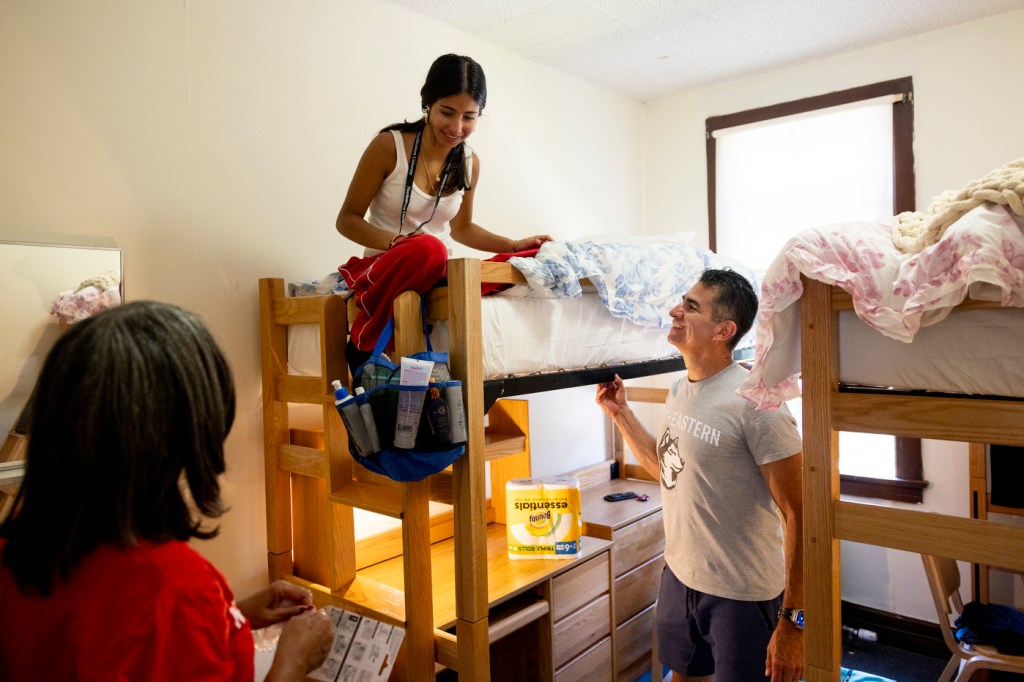Northeastern engineering students examine the role of fluid mechanics firsthand at the Panama Canal
Students joined professor Carlos Hidrovo in Panama to experience engineering principles at the canal, a wind farm in Penonomé and hydroelectric power facilities in the Chiriqui Highlands.

The Panama Canal is one of the most important waterways in the world, allowing fast passage for ships between the Pacific and Atlantic oceans.
With its 12 lock chambers that use water and gravity to raise and lower ships, the 50-mile route is also a major feat of engineering.
It relies heavily on fluid mechanical concepts such as hydrostatics and gravity flow, explains Carlos Hidrovo, associate professor of mechanical and industrial engineering at Northeastern University. Those are the principles that Hidrovo teaches his undergraduate students at Northeastern in his fluid mechanics class.
While students have always been able to take the class on the Boston campus, since 2021 Hidrovo has led a Dialogue of Civilizations trip to Panama in which students can opt to take the class in the Central American country to see how the concepts they are learning in class are being implemented in the real world.
This summer, 11 students joined Hidrovo on a month-long trip to the country, making stops at the canal just outside Panama City, a wind farm in Penonomé and hydroelectric power facilities in the Chiriqui Highlands.
In addition to taking the fluid mechanics class, students were also enrolled in a separate cultural project course. For that course, students were put into separate groups and tasked with writing a report and presentation focused on one of the three engineering projects they visited.
Pranshu Sangal, a third-year mechanical engineering student, was tasked with investigating the Panama Canal’s cultural and socioeconomic impact for his group project.

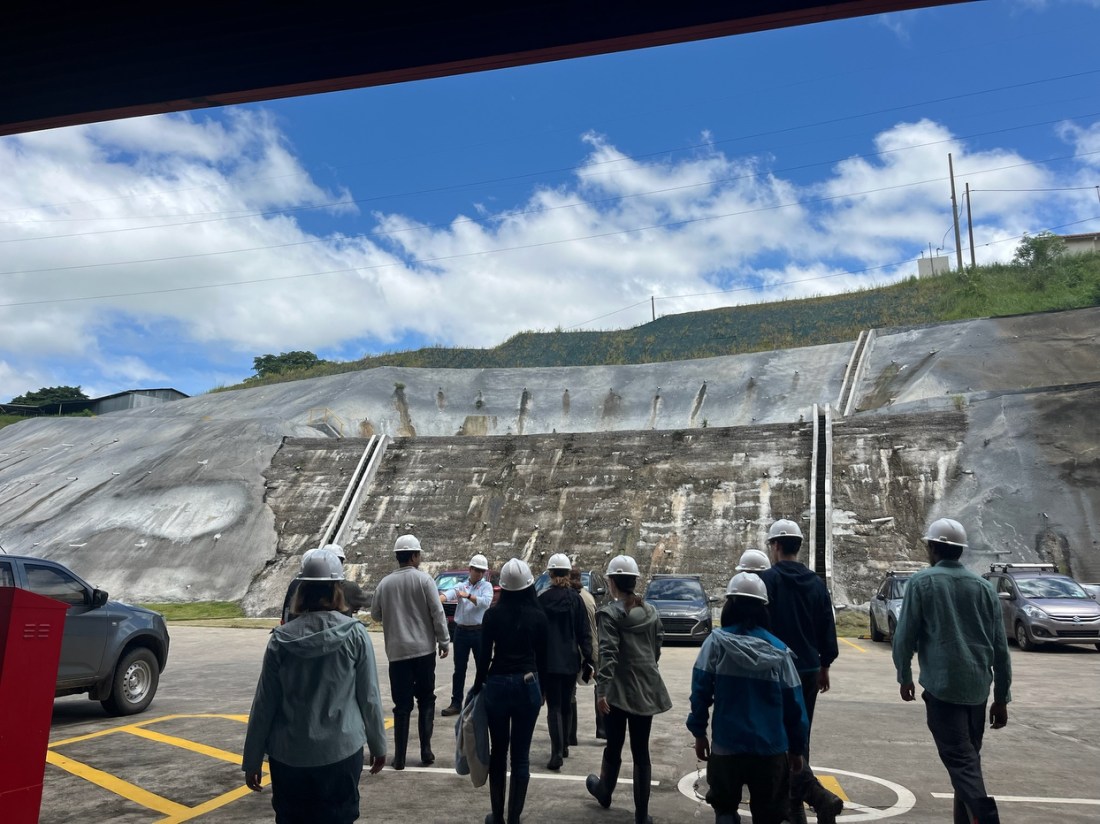

The canal was built by the United States and was under its control until 1977, when President Jimmy Carter began the handover to Panama, Sangal says. Today, it is a major part of Panama’s economy, generating billions of dollars in revenue a year.
The canal’s last major expansion was in 2016, Sangal explains, highlighting a system of new NeoPanamax locks that were installed to allow for the passage of larger vessels.
Sixty percent of the water used to power those locks is recycled. The other 40% comes from Gatun Lake, the manmade lake that sits atop the canal that the ships cross through, he explained.
Sangal spoke firsthand with residents living within proximity of the canal, as well as local Panamanian economists. And of course, he saw the canal in action.
“Actually being there and seeing huge vessels rise up and go down, it was like, ‘Wow, it’s all fluid mechanics,’” he says.
It was also an eventful month for Diana Sooknauth, a fourth-year mechanical engineering student at Northeastern, who described the experience as rigorous but enriching.
“The whole itinerary is very intentional. While we were learning the first concepts that applied to the Panama Canal, after we learned those concepts, then went to the Panama Canal,” she says, highlighting now she has a better understanding of the conservation of mass and the conservation of momentum after seeing how they apply to the Panamanian landmark.
For her project, Sooknauth was tasked with investigating the Penonomé Wind farm, the largest wind farm in Central America. The 270-megawatt project provides 7% of the country’s energy needs.
Sooknauth focused on understanding how Betti’s theorem — a structural engineering theory — applies to the wind farm.
“It basically explains the amount of loss that occurs from a wind turbine,” she says. “It says that wind turbines can only reach about 59% maximum efficiency, which means you can only get 59% of energy from wind.”
She also tackled the social and cultural impact of the wind farm, highlighting how farmers nearby benefited from the project.
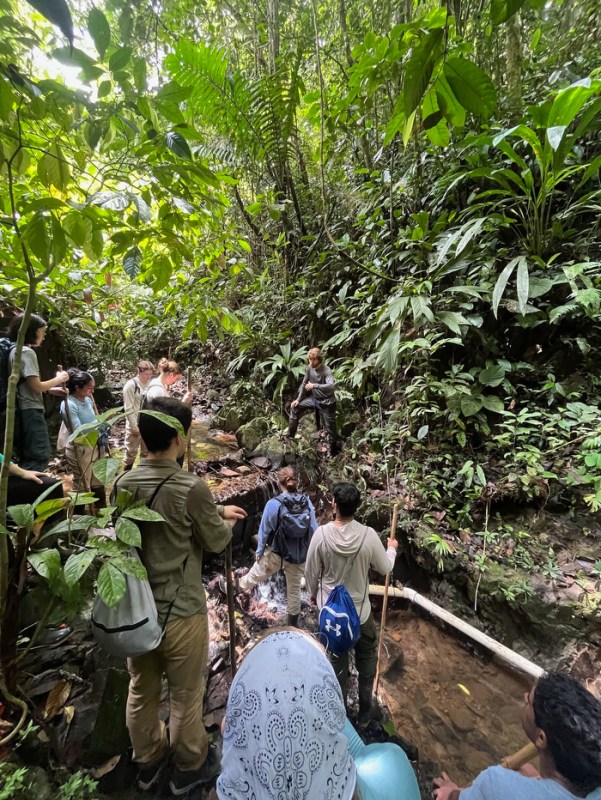
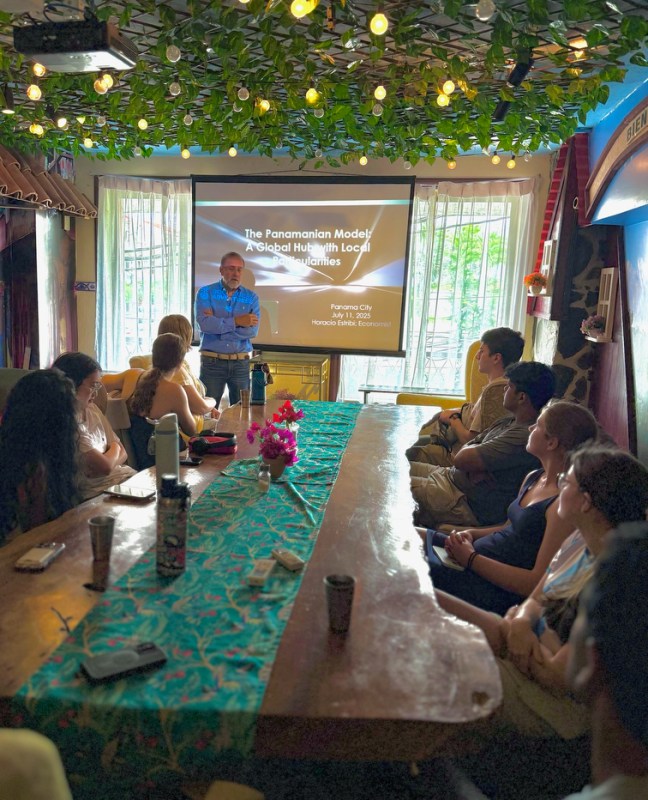
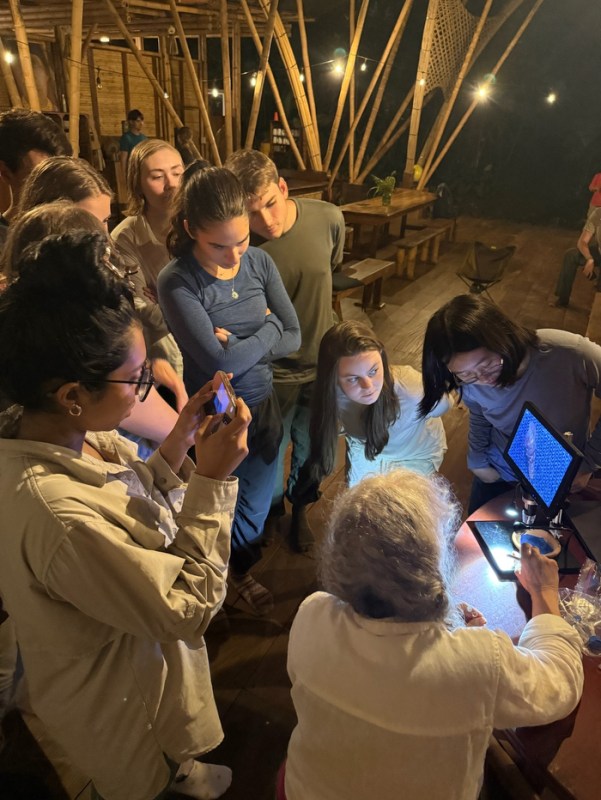
“Because they gave up their land for the wind farm, they were getting revenue, and with that revenue they were able to get better farming equipment,” she says. “With that better farming equipment, they were able to harvest more.”
Working alongside Sooknauth on the project was Vanessa Rubin, a third-year mechanical engineering student. Her job on the project was to understand the airfoil shape of the turbine blades.
Editor’s Picks
As opposed to an oval-shaped blade, an airfoil blade tapers off the amount of turbulence an active wind turbine experiences, she says.
Sooknauth and Rubin were able to see a turbine up close when they visited the wind farm with the group.
“It was about 125 feet long and each blade was about 11 tons,” she says. “Most of the turbines have an extra blade on the ground, so if it needs to be replaced, they don’t need to order it.”
The students also spent 12 days in a rainforest camp in the Mamoní Valley operated by a local Panamanian nonprofit, learning about the country’s natural biodiversity and sustainability efforts. The camp itself is powered by a hydroelectric power system and is only accessible by four-wheeler.
Panama relies heavily on hydroelectric generation and much of that moving water comes from the country’s rain forest, explains Hidrovo, who was born and raised there.
“Two-thirds of Panama is almost completely rainforest,” he says, adding that much of those rainforests are protected by reservation laws and the country’s indigenous population.
“The reality is that we have 15% of the minority population taking care of most of our land,” he adds. “We’ve been able to prevent most of the deforestation that you see in Brazil and other countries because of that.”
University News
-
 Northeastern grads launch health care startup to reduce post-surgical infections and optimize clinical workflows
Northeastern grads launch health care startup to reduce post-surgical infections and optimize clinical workflows -
 Northeastern research finds aerobic fitness and lower body fat are associated with better mental health outcomes in children
Northeastern research finds aerobic fitness and lower body fat are associated with better mental health outcomes in children -
 From finding friends to finding a major, Northeastern students share advice for first-year students to ease their transition
From finding friends to finding a major, Northeastern students share advice for first-year students to ease their transition



